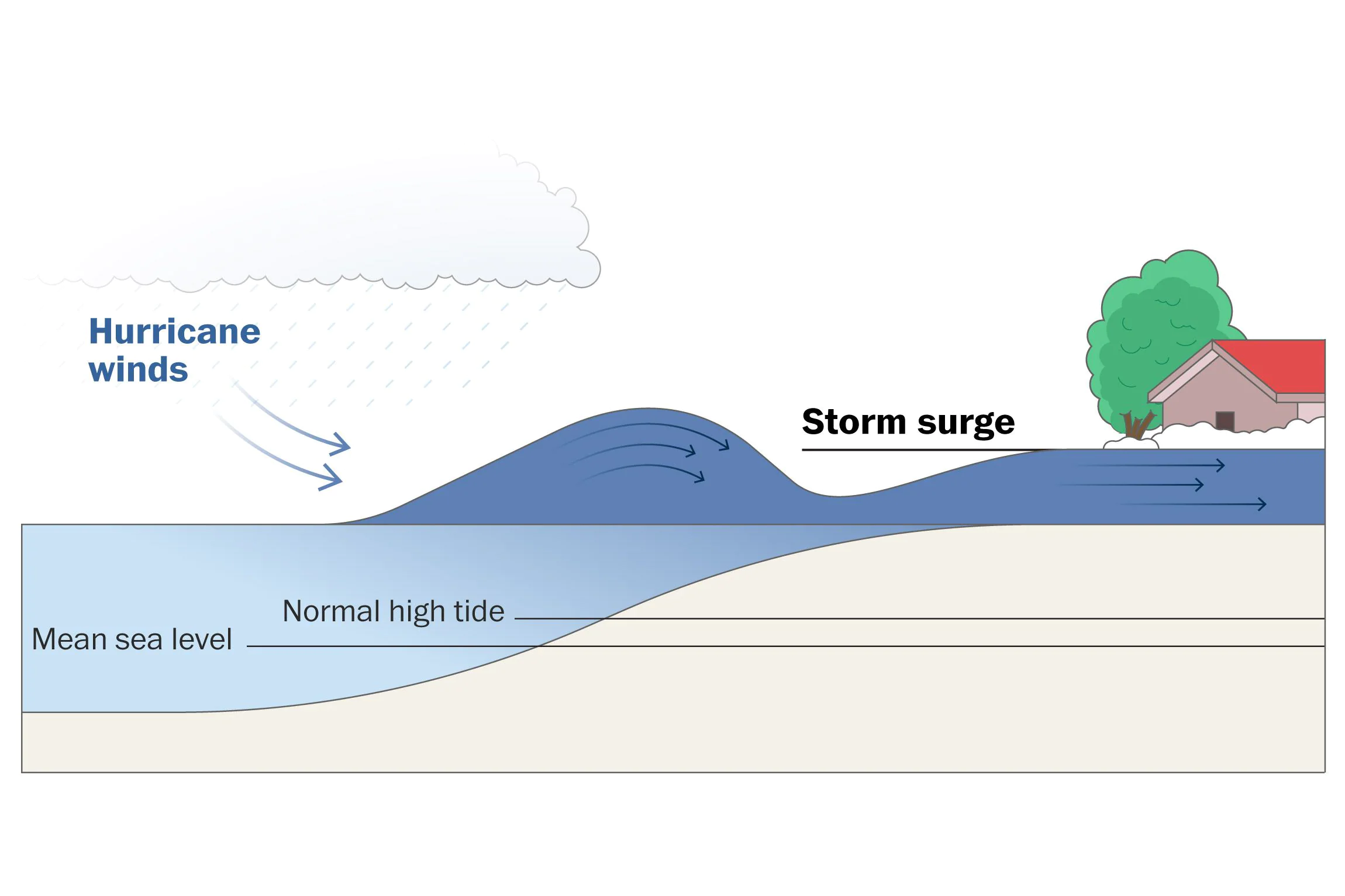
#HurricaneMilton #StormSurge #Asheville
I was inspired to write this short commentary after discovering that some of my friends didn’t quite understand how a town or city which is located many miles from a coastal area, and which is hundreds or even thousands of feet in elevation, could be so seriously affected by a hurricane coming off of the ocean, such as in the case of Asheville, North Carolina, USA for example.
I think this confusion results from not fully understanding exactly what a storm surge is, which is quite understandable if a person has never been through a hurricane, and if they don’t happen to live in a coastal area.
Basically, a storm surge is an abnormal rise in sea level that is caused by the strong winds and low pressure which are associated with a hurricane.
This rise in water level — which can be anywhere from a few feet up to as much as perhaps 30+ feet in the severest of storms — can lead to major coastal flooding, particularly in low-lying areas.
The storm surge is driven by the force of the hurricane’s winds raising and pushing water — like a giant, powerful wall of water — towards the shore, in conjunction with the storm’s low pressure, which allows the water level to rise higher than normal.
But that is not all. The height of that wall of water includes not only the storm surge itself, but the regular tide level as well.
For example, let’s say that at the time a hurricane makes landfall in a particular area, there is a very high tide in progress, or what is known as a spring tide. Even worse is a king tide which is higher than a spring tide.
If the king tide is 2.5 feet in height, and the storm surge is 20 feet in height, that means that when that powerful wave crashes ashore, it will be 22.5 feet in total height. Wow!
My friends, not only is there unimaginable force behind a storm surge, but they move very fast, typically 10-30 miles an hour, depending on the forward speed of the hurricane itself.
A storm surge is one of the most dangerous and deadly aspects of a hurricane, and is often responsible for widespread destruction and loss of life in a coastal area.
Here on Guam, I have witnessed firsthand the results of a powerful storm surge rushing ashore. The level of destruction is absolutely mind-boggling, as if you are in a war zone. Everything is uprooted and just gone down to the bare rock strata! Nothing is left!
Now, to be clear, the destruction that some people are describing at those higher elevations is NOT the result of an oceanic storm surge, because a storm surge can only penetrate inland a few miles at best depending on the topography of the land, the size, strength and speed of the hurricane itself, etc.
The destruction at those higher elevations results from a different set of factors including the following:
1. Wind speed
2. Amount of rainfall
3. Topography of the land
4. Flash floods
5. Rivers, lakes, etc. overflowing their regular boundaries.
For example, even though you live in a town or city that is at a higher elevation and miles away from the ocean, if that town or city is in turn surrounded by even higher hills or mountains — kind of like a bowl — it is going to be in serious trouble!
Now, if that same town or city is also located near a body of water, or even near multiple bodies of water — such as a confluence of rivers — that town or city is going to be in even worse trouble, not just from the excessive wind speed, but from all of that excessive rainfall filling up those lakes and rivers.
But that is not all. You’ve also got flash floods rushing down hills and mountains at tremendous speeds.
Lastly, there are landslides to boot, washed out roads, etc.
My friends, that is exactly what happened at places such as Asheville, N.C. It had nothing to do with the oceanic storm surge many miles away which could not possibly reach those elevations.
I hope this explanation clears things up for some of you.
